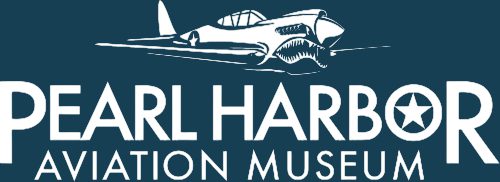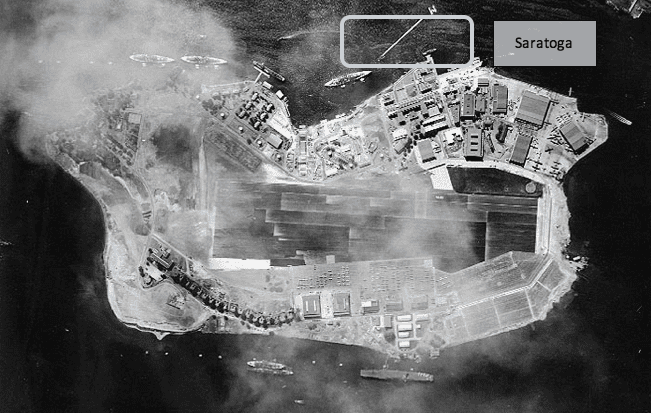Posted on November 01, 2010
The Pacific Fleet’s three aircraft carriers were fortunately out of port on December 7, 1941. The Saratoga was en route from Bremerton, Washington to San Diego, where she would embark her air wing. The Enterprise and the Lexington were on missions to deliver aircraft to Wake and Midway, respectively. The Lexington had just left on November 5th. The Enterprise had left on November 28 and been scheduled to return on the 6th, but heavy seas delayed her arrival until late in the day on December 7.If the carriers had been in port during the attack, where would they have berthed? Although ships did not always berth at the same location, Commander Lawrence R. Schmeider reported that the biggest ships had “normal” mooring points. For all three carriers, we know these normal mooring points from photographs, and for the Enterprise, we have additional information directly from Schmeider and at least one other source.
As Figure 1 and Figure 2 show, the Lexington and Saratoga typically moored to the northwest of Ford Island. So did the Utah when she was in port.
The fact that carriers often berthed on the northwest side of Ford Island does not come as a surprise to most docents at Pearl Harbor Aviation Museum. We often say that “carrier row” was opposite from battleship row relative to Ford Island. However, Figure 3 shows a photo of the Enterprise at her berthing point. Notice that this is on the southeast side of the Ford Island, between the California’s normal berth and the berths of the other battleships on battleship row.
This may come as a surprise to many docents. However, in addition to the photographic evidence, we have the statement of Commander Lawrence R. Schmeider, whose detailed report on the normal berthing points of a number of ships at Pearl Harbor included information about the Enterprise. He specifically said that the Enterprise usually moored behind the California. Supporting this, the book Battleship Sailorhas a photograph of the Enterprise moored just behind the California’ stern.
If the Enterprise had been moored between the California and the other battleships during the attack, she would have been impossible to miss. To get long enough low-altitude runs to their targets, the 24 Kate torpedo bombers that approached battleship row had to fly through the narrow Southeast Loch. To hit most battleships, the Kates had to veer to the right when exiting the loch. To hit the California, they had to veer left. However, Figure 4 shows that the Southeast Loch pointed like an arrow almost directly at the normal berthing point of Enterprise.


